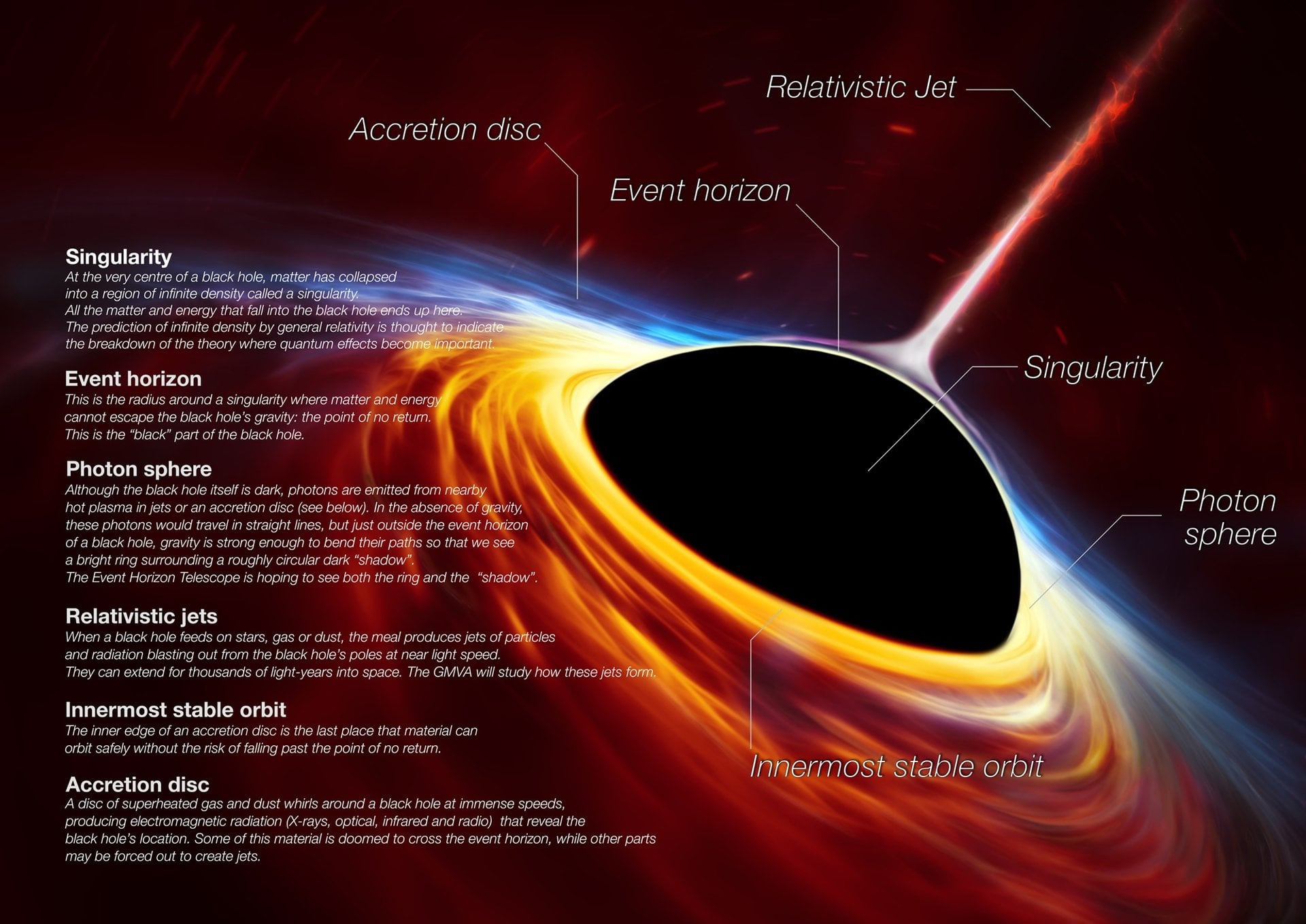With the federal authorities reducing funds for analysis, scientific organizations are dealing with a finances crunch. This consists of astrophysics and cosmology, the place researchers take a look at theories basic to our understanding of the Universe. A great instance is the seek for Darkish Matter (DM), which often consists of smashing protons in particle accelerators to search out proof of this elusive particle. In response to a current research that appeared within the Bodily Evaluation Letters, black holes may signify a less expensive, pure different.
The research was performed by Dr. Andrew Mummery of the Rudolf Peierls Centre for Theoretical Physics on the College of Oxford. He was joined by Joseph Silk, a Professor of Physics and Astronomy with the Institut d’Astrophysique de Paris, the William H. Miller III Division of Physics and Astronomy at The Johns Hopkins College, and the Beecroft Institute of Particle Astrophysics and Cosmology on the College of Oxford.
As Mummery and Silk argue, utilizing black holes for scientific analysis may complement multi-billion-dollar services that take many years to assemble. Essentially the most notable of those is CERN’s Giant Hadron Collider, the world’s largest and strongest particle accelerator on this planet. In these services, protons and different subatomic particles are smashed collectively at velocities approaching the pace of sunshine, producing delicate power flashes and particles that might reveal beforehand undiscovered particles.
This consists of potential candidate particles for darkish matter, which accounts for roughly 85% of all matterUniverseUniverse. As well as, services just like the LHC have helped to advance the web and analysis into most cancers remedy and high-performance computing. As Silk defined in a JHU Hub press launch:
“One of many nice hopes for particle colliders just like the Giant Hadron Collider is that it’s going to generate darkish matter particles, however we have not seen any proof but. That is why there are discussions underway to construct a way more highly effective model, a next-generation supercollider. However as we make investments $30 billion and wait 40 years to construct this supercollider – nature might present a glimpse of the longer term in tremendous huge black holes.”
A schematic map displaying a doable location for the Future Round Collider. Credit score: CERN
Kerr black holes, that are quite common within the Universe, have angular momentum, that means that they spin quickly on their axes. Actually, the accretion of fabric onto these black holes causes this momentum to extend. Scientists have additionally famous that supermassive black holes (SMBHs) on the heart of galaxies launch large quantities of plasma, possible from their accretion disks and relativistic jets emanating from their poles.
As they argue of their research, fuel flows which can be iUniverse from a black holes accretion disk can produce a “gravitational particle accelerator” with heart of mass energies starting from tens to a whole lot of teraelectronvolts (TeV). For comparability, the LHC is able to producing energies of as much as 13 TeV, whereas the proposed Future Round Collider (FCC) – at present in growth by CERN – will reportedly be able to producing 100 TeV. In brief, these collision occasions round SMBHs may produce the identical outcomes as supercolliders. Mentioned Silk:
“If supermassive black holes can generate these particles by high-energy proton collisions, then we would get a sign on Earth, some actually high-energy particle passing quickly by way of our detectors. That will be the proof for a novel particle collider inside probably the most mysterious objects within the universe, attaining energies that will be unattainable in any terrestrial accelerator. We might see one thing with a wierd signature that conceivably gives proof for darkish matter, which is a little more of a leap however it’s doable.”
“Some particles from these collisions go down the throat of the black gap and disappear perpetually. However due to their power and momentum, some additionally come out, and it is people who come out that are accelerated to unprecedentedly excessive energies. We discovered how energetic these beams of particles may very well be: as highly effective as you get from a supercollider, or extra. It’s extremely laborious to say what the restrict is, however they definitely are as much as the power of the most recent supercollider that we plan to construct, so they might undoubtedly give us complementary outcomes.”

Artist’s impression of a rotating SMBH surrounded by an accretion disk. Credit score: ESO/ESA/Hubble/M. Kornmesser/N. Bartmann
Whereas distance is definitely an element, these particle collisions may very well be studied utilizing observatories which can be at present monitoring supernova and different energetic cosmic occasions – akin to neutrino occasions. Examples embody the IceCube Neutrino Observatory on the South Pole or the Kilometer Dice Neutrino Telescope (KM3Net), a next-generation neutrino telescope situated beneath the Mediterranean Sea. There’s additionally the World Neutrino Community (GNN), a global group that plans to allow nearer collaboration amongst neutrino observatories worldwide.
There have additionally been proposals to watch the gamma-ray bursts (GRBs) coming from the middle of the Milky Means for doable proof of DM. These investigations may provide an economical technique of testing the usual mannequin of cosmology and physics that might complement high-cost analysis involving supercolliders.
Additional Studying: JHU, Bodily Evaluation Letters

